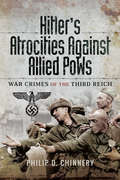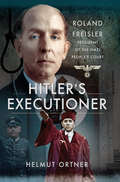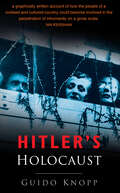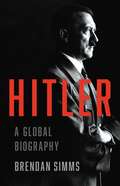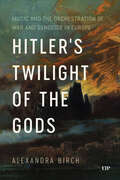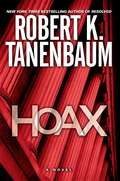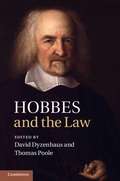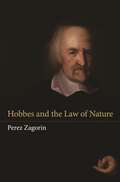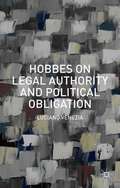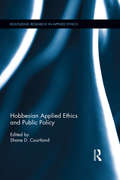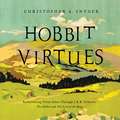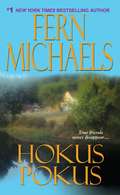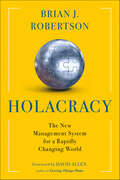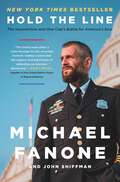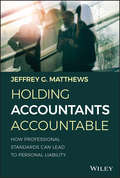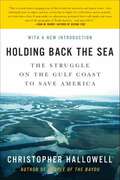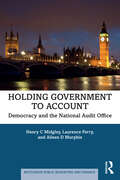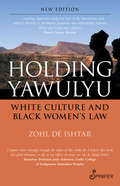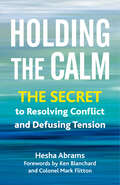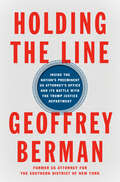- Table View
- List View
Hitler's Atrocities Against Allied PoWs: War Crimes of the Third Reich
by Philip D. Chinnery“A chilling description of the ordeals that captured men and women were put through by the Third Reich regime and their Italian allies.” —Daily MailSeventy years ago, the Nuremberg Trials were in full swing in Germany. In the dock were the leaders of the Nazi regime and most eventually received their just desserts. But what happened to the other war criminals?In June 1946, Lord Russell of Liverpool became Deputy Judge Advocate and legal adviser to the Commander in Chief for the British Army of the Rhine in respect of all trials held by British Military Courts of German war criminals. He later wrote:“At the outbreak of the Second World War, the treatment of prisoners was governed by the Geneva Prisoner of War Convention of 1929, the Preamble of which stated that the aim of the signatories was to alleviate the conditions of prisoners of war.“During the war, however, the provisions of the Convention were repeatedly disregarded by Germany. Prisoners were subjected to brutality and ill-treatment, employed on prohibited and dangerous work, handed over to the SD for ‘special treatment’ in pursuance of Hitler’s Commando Order, lynched in the streets by German civilians, sent to concentration camps, shot on recapture after escaping, and even massacred after they had laid down their arms and surrendered.”Tens of thousands of Allied prisoners of war died at the hands of the Nazis and their Italian allies. This book is for them lest we forget.“A sobering and harrowing book, detailing many forgotten crimes committed against POWs who should have been offered the protection of the Geneva Convention, but tragically were not.” —Recollections of WWII
Hitler's Executioner: Roland Freisler, President of the Nazi People's Court
by Helmut OrtnerThe biography of the infamous judge who oversaw Nazi justice for the Third Reich as president of the &“People&’s Court.&” Though little known, the name of the judge Roland Freisler is inextricably linked to the judiciary in Nazi Germany. As well as serving as the State Secretary of the Reich Ministry of Justice, he was the notorious president of the &“People&’s Court,&” a man directly responsible for more than 2,200 death sentences; with almost no exceptions, cases in the &“People&’s Court&” had predetermined guilty verdicts. It was Freisler, for example, who tried three activists of the White Rose resistance movement in February 1943. He found them guilty of treason and sentenced the trio to death by beheading; a sentence carried out the same day by guillotine. In August 1944, Freisler played a central role in the show trials that followed the failed attempt to assassinate Adolf Hitler on 20 July that year—a plot known more commonly as Operation Valkyrie. Many of the ringleaders were tried by Freisler in the &“People&’s Court.&” Nearly all of those found guilty were sentenced to death by hanging, the sentences being carried out within two hours of the verdicts being passed. Roland Freisler&’s mastery of legal texts and dramatic courtroom verbal dexterity made him the most feared judge in the Third Reich. In this in-depth examination, Helmut Ortner not only investigates the development and judgments of the Nazi tribunal, but the career of Freisler, a man who was killed in February 1945 during an Allied air raid.
Hitler's Executioner: Roland Freisler, President of the Nazi People's Court
by Helmut OrtnerThe biography of the infamous judge who oversaw Nazi justice for the Third Reich as president of the &“People&’s Court.&” Though little known, the name of the judge Roland Freisler is inextricably linked to the judiciary in Nazi Germany. As well as serving as the State Secretary of the Reich Ministry of Justice, he was the notorious president of the &“People&’s Court,&” a man directly responsible for more than 2,200 death sentences; with almost no exceptions, cases in the &“People&’s Court&” had predetermined guilty verdicts. It was Freisler, for example, who tried three activists of the White Rose resistance movement in February 1943. He found them guilty of treason and sentenced the trio to death by beheading; a sentence carried out the same day by guillotine. In August 1944, Freisler played a central role in the show trials that followed the failed attempt to assassinate Adolf Hitler on 20 July that year—a plot known more commonly as Operation Valkyrie. Many of the ringleaders were tried by Freisler in the &“People&’s Court.&” Nearly all of those found guilty were sentenced to death by hanging, the sentences being carried out within two hours of the verdicts being passed. Roland Freisler&’s mastery of legal texts and dramatic courtroom verbal dexterity made him the most feared judge in the Third Reich. In this in-depth examination, Helmut Ortner not only investigates the development and judgments of the Nazi tribunal, but the career of Freisler, a man who was killed in February 1945 during an Allied air raid.
Hitler's Holocaust
by Guido KnoppNo crime in the twentieth century has so deeply shocked mankind as the Holocaust. And none has so stubbornly resisted every attempt to explain it. More than six million people were murdered, and countless more endured horrific suffering. Guido Knopp's disturbing account is the most complete history of teh Holocaust to date. It reveals the appalling truth using the most recent historical research, including minutes of daily briefings by Joseph Goebbels, private papers of the SS Einsatzgruppen in charge of mass murder, and East German State Security documents detailing the deportation of Jews. The book relives the agony of the victims and investigations the motive of the perpetrators. Survivors talk for the first time about their horrifying torture and their eventual escape from Nazi persecution. The persecutors now at last confront the atrocities they committed. This is not an attempt to rewrite the history of the Holocaust, but a searing account of the greatest crime of the twentieth century - if not of all time - using the latest research on the subject.
Hitler: A Global Biography
by Brendan SimmsFrom a prize-winning historian, the definitive biography of Adolph HitlerHitler offers a deeply learned and radically revisionist biography, arguing that the dictator's main strategic enemy, from the start of his political career in the 1920s, was not communism or the Soviet Union, but capitalism and the United States. Whereas most historians have argued that Hitler underestimated the American threat, Simms shows that Hitler embarked on a preemptive war with the United States precisely because he considered it such a potent adversary. The war against the Jews was driven both by his anxiety about combatting the supposed forces of international plutocracy and by a broader desire to maintain the domestic cohesion he thought necessary for survival on the international scene.A powerfully argued and utterly definitive account of a murderous tyrant we thought we understood, Hitler is essential reading for anyone seeking to understand the origins and outcomes of the Second World War.
Hitler’s Twilight of the Gods: Music and the Orchestration of War and Genocide in Europe (German and European Studies #57)
by Alexandra BirchMusic was an integral part of statecraft and identity formation in the Third Reich. Structured thematically and semiotically around the Wagnerian tetralogy of the Ring cycle, Hitler’s Twilight of the Gods provides a sonic read of the Second World War and the Holocaust. Alexandra Birch sheds light on the specific type of music promoted under Nazism, linked to larger Teutonic mythologies and histories espoused in rhetoric and personal styling. The book explores the musical fixation of the command as it was extended to the ordinary troops of the Wehrmacht and SS in instances of musical sadism and destruction during the Holocaust. It reveals how, in constructing what was “German,” this process also intentionally fashioned a subaltern other with an assigned set of music and aesthetics.The book draws on analysis of testimony and perpetrator documents to reveal the execution of this binary identity and the inclusion of music even in extreme genocidal conditions. From drinking games in the interwar period, to musical sadism in the Holocaust, to the final delusions of the command in collapse, Hitler’s Twilight of the Gods illuminates how music was a component of camaraderie, identity, masculinity, and warfare.
Hoax (Butch Karp and Marlene Ciampi #16)
by Robert K. TanenbaumDistrict Attorney Butch Karp resolves the problems of New York City and, at the same time, the problems of his own complex family.
Hoax: A Novel (A Butch Karp-Marlene Ciampi Thriller #16)
by Robert K. TanenbaumThe shooting death of a rap mogul is the first link in a sinister chain ensnaring New York District Attorney Butch Karp. With his wife and daughter on a New Mexico retreat, Karp is left to fend for his teenaged sons and himself. Descending into the hip-hop underworld to prosecute a killer, Karp comes head-to-head wih Andrew Kane, a powerful would-be mayor whose corrupt web of influence leads Karp to unveil a shocking church sex-abuse scandal. In a world where secrets can be buried for an often-deadly price, Karp discovers there is no safe haven.
Hobbes and the Law
by Thomas Poole David DyzenhausHobbes's political thought provokes a perennial fascination. It has become particularly prominent in recent years, with the surge of scholarly interest evidenced by a number of monographs in political theory and philosophy. At the same time, there has been a turn in legal scholarship towards political theory in a way that engages recognisably Hobbesian themes, for example the relationship between security and liberty. However, there is surprisingly little engagement with Hobbes's views on legal theory in general and on certain legal topics, despite the fact that Hobbes devoted whole works to legal inquiry and gave law a prominent role in his works focused on politics. This volume seeks to remedy this gap by providing the first collection of specially commissioned essays devoted to Hobbes and the law.
Hobbes and the Law of Nature
by Perez ZagorinThis is the first major work in English to explore at length the meaning, context, aims, and vital importance of Thomas Hobbes's concepts of the law of nature and the right of nature. Hobbes remains one of the most challenging and controversial of early modern philosophers, and debates persist about the interpretation of many of his ideas, particularly his views about natural law and natural right. In this book, Perez Zagorin argues that these two concepts are the twin foundations of the entire structure of Hobbes's moral and political thought. Zagorin clears up numerous misconceptions about Hobbes and his relation to earlier natural law thinkers, in particular Hugo Grotius, and he reasserts the often overlooked role of the Hobbesian law of nature as a moral standard from which even sovereign power is not immune. Because Hobbes is commonly thought to be primarily a theorist of sovereignty, political absolutism, and unitary state power, the significance of his moral philosophy is often underestimated and widely assumed to depend entirely on individual self-interest. Zagorin reveals Hobbes's originality as a moral philosopher and his importance as a thinker who subverted and transformed the idea of natural law. Hobbes and the Law of Nature is a major contribution to our understanding of Hobbes's moral, legal, and political philosophy, and a book rich in interpretive and critical insights into Hobbes's writing and thought.
Hobbes on Legal Authority and Political Obligation
by Luciano VeneziaHobbes on Legal Authority and Political Obligation develops a new interpretation of Hobbes's theory of political obligation. According to the account developed in the book, the directives issued by the sovereign as introducing authoritative requirements, so that subjects are morally obligated to obey them.
Hobbesian Applied Ethics and Public Policy (Routledge Research in Applied Ethics)
by Shane D. CourtlandMost philosophers and political scientists readily admit that Thomas Hobbes is a significant figure in the history of political thought. His theory was, arguably, one of the first to provide a justification for political legitimacy from the perspective of each individual subject. Many excellent books and articles have examined the justification and structure of Hobbes’ commonwealth, ethical system, and interpretation of Christianity. What is troubling is that the Hobbesian project has been largely missing in the applied ethics and public policy literature. We often find applications of Kantian deontology, Bentham’s or Mill’s utilitarianism, Rawls’s contractualism, the ethics of care, and various iterations of virtue ethics. Hobbesian accounts are routinely ignored and often derided. This is unfortunate because Hobbes’s project offers a unique perspective. To ignore it, when such a perspective would be fruitful to apply to another set of theoretical questions, is a problem in need of a remedy. This volume seeks to eliminate (or, at the very least, partially fill) this gap in the literature. Not only will this volume appeal to those that are generally familiar with Hobbesian scholarship, it will also appeal to a variety of readers that are largely unfamiliar with Hobbes.
Hobbit Virtues: Rediscovering J. R. R. Tolkien's Ethics from The Lord of the Rings
by Christopher A. SnyderA response to our fractured political discourse, Hobbit Virtues speaks to the importance of &“virtue ethics&” by examining the fiction of J. R. R. Tolkien—with particular attention to his hobbits.Tolkien&’s works resonate with so many readers in part because Bilbo, Frodo, Sam, Merry, and Pippin demonstrate Classical, Judeo-Christian, Medieval, and even Hindu and Confucian virtues. Tolkien ennobles the small, the humble, and the marginalized in his Middle-earth writings and presents leaders who are hesitant to exercise power, are courteous, and value wisdom and learning. Each chapter in Hobbit Virtues consists of a wide-ranging discussion of a single virtue, exemplified by a character in Middle-earth, explaining its philosophical or theological roots and how the virtue is still relevant in a modern democracy. It will also include appendices where readers can find passages in Tolkien&’s and Lewis&’s works that discuss virtue ethics, and a glossary of virtues from ancient to modern, East to West. Tolkien&’s readers come from many different religious and secular backgrounds and the pleasure and profundity of Hobbit Virtues is that mutual respect for public virtues is, especially now, necessary for a well-functioning pluralistic society.
Hochschulerfinderrecht
by Louis Pahlow Klaus Ferdinand GärditzMit dem Wegfall des Hochschullehrerprivilegs 2002 kommen auf die deutschen Hochschulen neue Aufgaben zu. Forschungsergebnisse müssen nun auf Ihre Verwertbarkeit geprüft, Patentanmeldungen getätigt und zahlungskräftige Abnehmer gefunden werden. Zudem stellen sich ganz neue Fragen in Bezug auf die Lehr- und Forschungsfreiheit, die Einwerbung von Drittmitteln und die Kooperationen mit außeruniversitären Forschungseinrichtungen sowie der Industrie. Das vorliegende Handbuch will die genannten Fragenkreise im Spannungsfeld von öffentlichem Dienstrecht, Hochschulrecht einerseits, dem Recht des Geistigen Eigentums andererseits umfassend beantworten. Das Werk richtet sich an die Praxis in den Hochschulen, aber auch in der Industrie und Rechtsberatung.
Hohes Alter in Deutschland (Schriften zu Gesundheit und Gesellschaft - Studies on Health and Society #8)
by Michael Wagner Clemens Tesch-Römer Julia Simonson Roman Kaspar Susanne ZankDies ist ein Open-Access-Buch.Trotz des schnellen Wachstums des Anteils der Bevölkerung in einem Alter ab 80 Jahren an der Gesamtbevölkerung ist das Wissen über diese Bevölkerungsgruppe bislang gering. Zwar gibt es thematisch, methodisch und regional spezifische Studien, jedoch keine repräsentative Erfassung der Lebenssituation und Lebensqualität dieser Altersgruppe für den gesamtdeutschen Raum. Eine gute Datenlage ist jedoch notwendig: Zum einen, um den besonderen Unterstützungsbedarfen im hohen Alter zukünftig besser gerecht werden zu können. Zum anderen, um Lösungsansätze für sozialpolitische Herausforderungen wie der sozialen Sicherung im Alter sowie im Hinblick auf eine Generationengerechtigkeit entwickeln zu können. Schließlich, um negativen Altersbildern und Vorurteilen über die Lebensqualität im hohen Alter empirisch fundiert entgegenwirken zu können. Die Studie "Hohes Alter in Deutschland“ (D80+) ist eine bundesweit repräsentative Querschnittsbefragung der hochaltrigen Menschen in Privathaushalten und in Heimen. Sie wird vom Bundesministerium für Familie, Senioren, Frauen und Jugend (BMFSFJ) gefördert und gemeinsam vom Cologne Center for Ethics, Rights, Economics, and Social Sciences of Health (ceres) und dem Deutschen Zentrum für Altersfragen (DZA) durchgeführt. Die Studie vereint Perspektiven der an den beteiligten Institutionen verorteten Disziplinen wie Soziologie, Psychologie, Versorgungswissenschaften, Gerontologie und Medizin. Im vorliegenden Band werden zentrale Befunde u.a. zu den Themenbereichen Soziale und Digitale Teilhabe, Gesundheit und Versorgung, sowie Werte und subjektives Wohlbefinden vorgestellt.
Hokus Pokus (The Sisterhood, Book #9)
by Fern MichaelsNot Even An Ocean Can Keep The Sisterhood From Helping A Friend In Need... <P> There is no match for the Sisterhood--the seven friends who have taken vigilante justice to a new level--not even the Federal Bureau of Investigation. Although the women foiled former FBI director Mitch Riley's plot to frame their friends Judge Nellie Easter and lawyer Lizzie Fox, now they must remain in exile or risk capture. They can't complain about their opulent digs on a remote, luxurious mountaintop, but the ladies desperately miss home. Their wish to return might come true sooner than they expect when they receive a panicked call from Supreme Court Chief Justice Pearl Barnes, who faces blackmail for her own illegal brand of justice. Now the women must not only sneak back into the United States, but also remain undetected as they investigate. But how do you make seven women disappear? With a nosy reporter on the brink of exposing them, the clock is ticking as the Sisterhood tries to create a little magic--and save the day...
Holacracy: The New Management System for a Rapidly Changing World
by Brian J. RobertsonHolacracy is a revolutionary management system that redefines management and turns everyone into a leader.Holacracy distributes authority and decision-making throughout an organization, and defines people not by hierarchy and titles, but by roles. Holacracy creates organizations that are fast, agile, and that succeed by pursuing their purpose, not following a dated and artificial plan.This isn't anarchy – it's quite the opposite. When you start to follow Holacracy, you learn to create new structures and ways of making decisions that empower the people who know the most about the work you do: your frontline colleagues.Some of the many champions of Holacracy include Tony Hsieh, CEO of Zappos (author of the #1 New York Times bestseller Delivering Happiness), Evan Williams (co-founder of Blogger, Twitter, and Medium), and David Allen.
Hold Your Nose and Vote: Why Do Some Democracies Tolerate Corruption?
by Marco PaniA report from the International Monetary Fund.
Hold the Line: The Insurrection and One Cop's Battle for America's Soul
by John Shiffman Michael FanoneAn urgent warning about the growing threat to our democracy from a twenty-year police veteran and former Trump supporter who nearly lost his life during the insurrection of January 6th. <p><p>When Michael Fanone self-deployed to the Capitol on January 6, 2021, he had no idea his life was about to change. When he got to the front of the line, he urged his fellow officers to hold it against the growing crowd of insurrectionists—until he found himself pulled into the mob, tased until he had a heart attack, and viciously beaten with a Blue Lives Matter flag as shouts to kill him rang out. <p><p>Now, Fanone is ready to tell the full story of that fateful day, along with exploring our country’s most critical issues as someone who has had firsthand experience with many of them. A self-described redneck who voted for Trump in 2016, Fanone’s closest friend was an informant—a Black, transgender, HIV-positive woman who has helped him mature and rethink his methods as a police officer. <p><p>With his unique insight as an undercover detective and intense desire to do the right thing no matter the cost, Fanone provides a nuanced look into everything from policing to race to politics in a way that is accessible across all party lines. Determined to make sure no one forgets what happened at the Capitol on January 6th, Fanone has written a timely call to action for anyone who wants to preserve our democracy for future generations. <p> <b>New York Times Bestseller</b>
Holding Accountants Accountable: How Professional Standards Can Lead to Personal Liability
by Jeffrey G. MatthewsAn essential guide for practitioners on avoiding unethical situations in a fraud investigation—provides tips, techniques, and real-life examples Credentialed accountants, auditors, and fraud examiners who fail to identify fraud and misconduct may be in violation of their professional standards. Among these standards are requirements to exercise professional and moral judgment, act in the best interest of the public, maintain integrity, objectivity, and independence, render opinions based on evidence and documentation, and exercise due care in planning and discharging professional activities. Failing to adhere to professional standards and ethical codes have serious consequences for CPAs, CFEs, and CIAs engaged in fraud investigations. Fraud helps readers avoid unethical situations in fraud investigations and stay within the boundaries of professional guidelines and standards. Author Jeffrey Matthews combines real-world techniques and practical advice with personal insights from his experience as a forensic accountant. Detailing how he faced death threats, retaliation, and family hardships during actual fraud investigations, the author shares how despite serious challenges, he never deviated from professional standards. The author demonstrates how accountants can avoid being caught in unethical practices and examines the common tendencies that hinder the ability to detect, deter, and prevent fraud and misconduct. This fascinating, highly-relevant book will help practitioners: Recognize current and emerging trends to identify new areas of weakness Address time and budget constraints with effective delegation and supervision of lower-level staff Maintain a healthy dose of skepticism by ‘testing not accepting’ Understand the effort and expertise required to perform an investigation before accepting engagements Avoid establishing biases and pre-determining outcomes before accepting assignments A full-featured resource, complete with PowerPoint slides and a test bank, Fraud is invaluable for auditors, accountants, and other certified fraud examiners.
Holding Back the Sea: The Struggle on the Gulf Coast to Save America
by Christopher HallowellKatrina's arrival on the Gulf Coast was a long time in coming. But it was assured. Since 1965, when Hurricane Betsy struck New Orleans, breached a levee, and flooded part of the city, everyone was waiting and talking about when the Big One would strike and do even more damage. Katrina was that hurricane, predictedand imagined before she struck, but so much worse in her reality.Holding Back the Sea is about the consequences of ignoring the warning signs that nature provides and the struggle to convince the rest of the country that South Louisiana lay in the path of destruction. The signs were not subtle; there were Hurricanes Andrew in 1992, George and Mitch in 1998, and Ivan in 2004, among others. At one time or another in their journeys north, they all threatened New Orleans. Some had headed right for the city before veering to the east and west, sparing the Big Easy and reinforcing the nickname. But the Big Easy ended -- at least in reputation -- on August 29, 2005, when the Big One came ashore as Katrina.
Holding Government to Account: Democracy and the National Audit Office (Routledge Public Budgeting and Finance)
by Laurence Ferry Henry C Midgley Aileen D MurphieThe National Audit Office has played an important role in the checks and balances of the UK parliamentary and political system over the last 40 years. This new book, more than just a history of the UK’s supreme audit institution, examines the very definition of accountability through both an historic and an academic lens, critically exploring questions about the role of audit in a democracy and how well it is working.Holding Government to Account draws on several unique sources of evidence, including interviews with senior officials from the National Audit Office and the civil service, as well as senior parliamentarians with experience of the NAO’s relationships with government and legislature. These interviews are supplemented by an analysis of previously unpublished manuscript material in the National Archives, examination of NAO reports and parliamentary and other reports focused on accountability. The book begins with a history of the National Audit Office in the context of the UK’s wider history. It then offers an overview of the constitutional, political and human legacies of the Exchequer and Audit Department, followed by a close examination of the National Audit Office’s leadership and decision-making from inception in 1984 through to the present. The authors conclude with an exploration of the way in which the meaning of public sector audit has evolved over time, in accordance with its wider political, ideological and material context. In doing so, they demonstrate that any question about the National Audit Office’s future and organisation is really a question about what democracy and good government mean in a modern bureaucratic state.Holding Government to Account will be of keen interest to students enrolled in courses on accounting, public administration, law and politics as well as to politicians, civil servants and Supreme Audit Institutions internationally.
Holding Yawulyu: White Culture and Black Women's Law
by Zohl Dé IshtarFor two years, Zohl dé Ishtar lived in a one-room tin shed with the women Elders of Balgo. As their "Culture Woman", Zohl assisted the Elders in establishing and coordinating the Kapululangu Women's Law and Culture Centre. Holding Yawulyu: White Culture and Black Women's Law tells the amazing story of Zohl's journey as it documents White culture's impact on Indigenous Women's Law. Seventeen years later, Zohl remains at Balgo and provides a new Preface to this edition. Holding Yawulyu is an investigation into the inter-cultural relationship of White and Indigenous societies through successive waves of missionary, bureaucratic and art industry influence.
Holding the Calm: The Secret to Resolving Conflict and Defusing Tension
by Hesha AbramsHolding the Calm is a practical and immediately useful guide that meticulously lays out twenty concrete, easy-to-use tools for defusing tension, settling cases, resolving disputes, and rechanneling arguments.How do you stop conflict? Settle disputes? Handle someone who is yelling at you, crying, or just won't speak? How do you find a solution when a solution seems impossible? Holding the Calm shares the secrets that enable everyone to avoid, minimize, or resolve conflict.Popular master mediator Hesha Abrams has tens of thousands of hours in the trenches mediating human conflict, and she shares her pragmatic wisdom in digestible bites that detail how to improve situations and solve difficult problems between human beings, from family and workplace disputes to complex commercial and global conflicts. Learn how to Speak into the ears that hear you Be the grown-up in the room Listen to what is not said Create small, winnable victoriesPractical, inspirational, and full of accessible tools you can use right now, Holding the Calm proves that you don't need an advanced degree or certification to minimize challenges and defuse tension between real people, businesses, and countries.
Holding the Line: Inside the Nation's Preeminent US Attorney's Office and Its Battle With the Trump Justice Department
by Geoffrey Berman"Throughout my tenure as US attorney, Trump's Justice Department kept demanding that I use my office to aid them politically, and I kept declining—in ways just tactful enough to keep me from being fired. I walked this tightrope for two and a half years. Eventually, the rope snapped." - from Holding the Line. <p><p>The gripping and explosive memoir of serving as US Attorney for the Southern District of New York, in the face of the Justice Department’s attempts to protect Trump’s friends and punish his enemies. <p><p> Ascending to the leadership role of US Attorney for the Southern District, which includes Manhattan and several counties to the north, is a capstone to any legal career: it entails guiding a team of the best lawyers in America in selecting and winning cases that often have global import. Geoffrey Berman was honored to be tapped for the job by Donald Trump in 2018. The manner in which Trump had dispatched his predecessor, Preet Bharara, was troubling, but the institution was fabled for its independence. Surely he could manage. So began one of the most tumultuous two-and-a-half-year stretches in the over two-hundred-thirty year history of the office. Almost immediately, Berman found himself pushing back against the Trump Justice Department’s blatant efforts to bring weak cases against political foes and squash worthy cases that threatened to tarnish allies and Trump himself. When Bill Barr became attorney general, Berman hoped and believed things would get better, but instead they got much worse. <p><p>The heart of Holding the Line is his never-before-told account of the lengths Barr went to in corrupting the independence of the office, and the lengths Berman had to go in preserving it. Finally, Trump and Barr, fed up with Berman’s principles, summarily fired him, though he refused to go quietly and prevented Barr from installing someone who might be more compliant. Berman’s determined defense of the values of prosecutorial independence, without fear or favor, made him a hero to everyone who shares those values. <p><p>Holding the Line also relates the remarkable casework of the Southern District in Berman’s time there, including taking down notorious sex traffickers Jeffrey Epstein and Lawrence Ray, Big Pharma executives, and vicious criminal syndicates, and repatriating Nazi-looted art. Riveting in themselves, these stories showcase the esprit de corps that makes the Southern District so special, and the stakes Berman felt in protecting its integrity against all foes, up to and including the US attorney general and the president of the United States. <p> <b>New York Times Bestseller</b>
